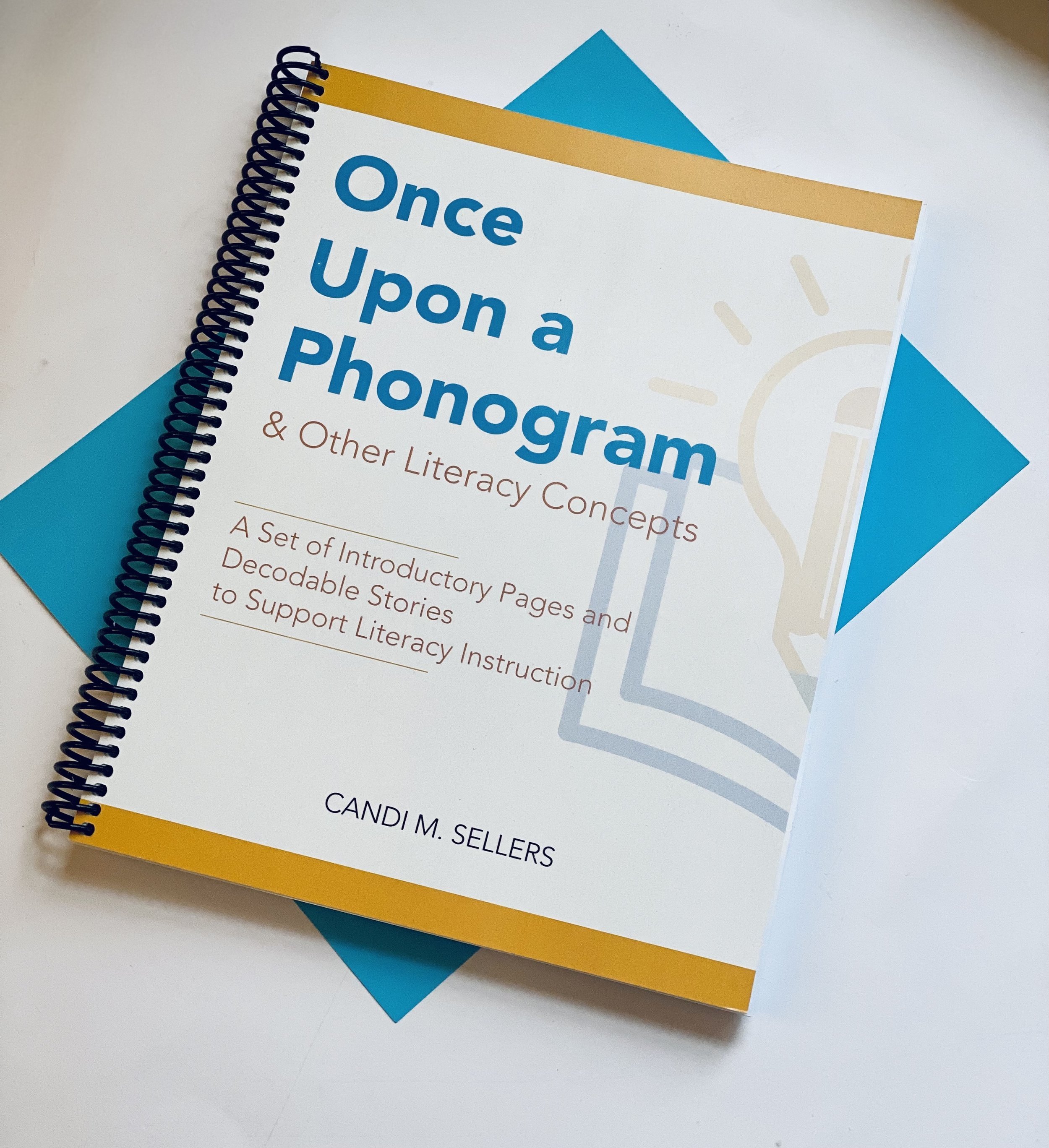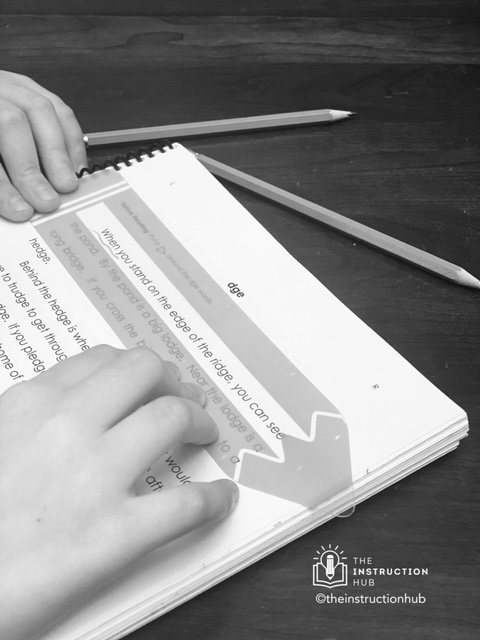Tour the Book: Once Upon a Phonogram
Please note that this book has federal copyright and the design, content, and material are the intellectual property of © 2021 Candi M. Sellers.
Once Upon a Phonogram has been a dream of mine for a long time. I have worked as a classroom teacher in public and private schools, a private tutor, and in homeschool settings. I have taught pre-k to adults. The time it takes to create an Orton-Gillingham or structured literacy lesson plan is not lost on me. I want OG to be applied in all settings because I believe in the impact that it can have on students. Using instructional techniques and tools based on the science of reading, your instruction can make waves. This book is only available as a hard copy, and you can find it and other books on my website here.
So why did I write the book?
Knowing the time it takes and knowing the demands of teaching, parenting, and life in general, I wanted to create a resource that could make part of your planning a bit more streamlined. I still believe your lessons should be diagnostic, prescriptive, and individualized. This is one of the ways that the Orton-Gillingham Approach is unique. However, having taught in the classroom I know that sometimes you have to individualize based on class or group. I know that you may want to apply the Orton principles and components of structured literacy in your classroom but it looks a bit different than if you were working one-on-one. One way to accomplish this while still keeping the systematic nature of your review and reinforcement is to adjust how you provide new information to your class, group, or individuals.
Sequence
Once Upon a Phonogram has an introductory page with at least one controlled passage to match the concept. This way when you introduce your new concept you can move from simple to complex (an OG principle) by starting at the sound, word, and sentence level, and then move into connected text. It is helpful for a student to immediately apply new learning in a controlled text. The concepts are ordered in a systematic way, with concepts grouped together. Since there is not one “Orton-Gillingham sequence,” this is based on the sequence of instruction that I use with my own students and with concept organization in mind. You can easily adapt to your instructional sequence based on the training course or Fellow that you have trained under.
A note on the syllable section: Consonant -le is the last syllable type that I teach. Even so, it is grouped in the book with the syllable types for ease of locating it in the table of contents. R- controlled syllables and vowel team syllables have their own section and each goes through multiple examples of each syllable type.
Intentional Design
You will find that the pages have a fair amount of blank space. This is intentional so that students with attentional, visual, or learning challenges can view the content with ease. Rounded and enlarged fonts are used. It doesn’t mean that my students do not fill the pages with notes and questions. In the page’s original design the emphasis was put on the material rather than the images. I do LOVE clipart, designs, pink boas, and anything creative. So really this design is sort of my opposite. However, I designed it from personal experience with my own children and students - blank space is important.
Instructional Routine
I won’t go into too much detail in this post about my routine. You will see the gist of it on the page. Each introductory page begins with the new phonogram, syllable type, or spelling generalization. It has a place to write the new phonogram while saying it aloud (keeping it AVK). The learner would then apply it in words to read, followed by three words to spell that would reinforce the new learning. This keeps with the synthetic and analytic principle of putting together and pulling apart to read and spell. Reading and spelling go hand in hand. The student would then move systematically into sentence reading and spelling. The last task would be to apply the new learning in the controlled passage.
What does it mean to tally the words? For sentence dictation, I say the sentence. My student echoes the sentence, and then they say it again while tallying the number of words on the line given. The student would then write the sentence. The tallies are a way to support the student in remembering the sentence and checking back to see if they have all of the words in the sentence. You will see after the sentence there is a guide to edit the sentence.
If you have any questions about this resource or any of my materials, please email me at candi@theinstructionhub.com. If you have the resource and like it or think someone would be interested in it, I would greatly appreciate a like, share, comment, or post! Be sure to tag @theinstructionhub or use the hashtag #theinstructionhub in your captions or photos. I love to see my resources included in the wonderful work that you do!
Thank you for reading!
This information is the intellectual property of ©2022 The Instruction Hub. Do not use or repurpose without expressed permission from The Instruction Hub. Please give The Instruction Hub an attribution if you choose to use, reference, or quote/paraphrase copyrighted materials. This includes but is not limited to blogs, social media, and resources.



